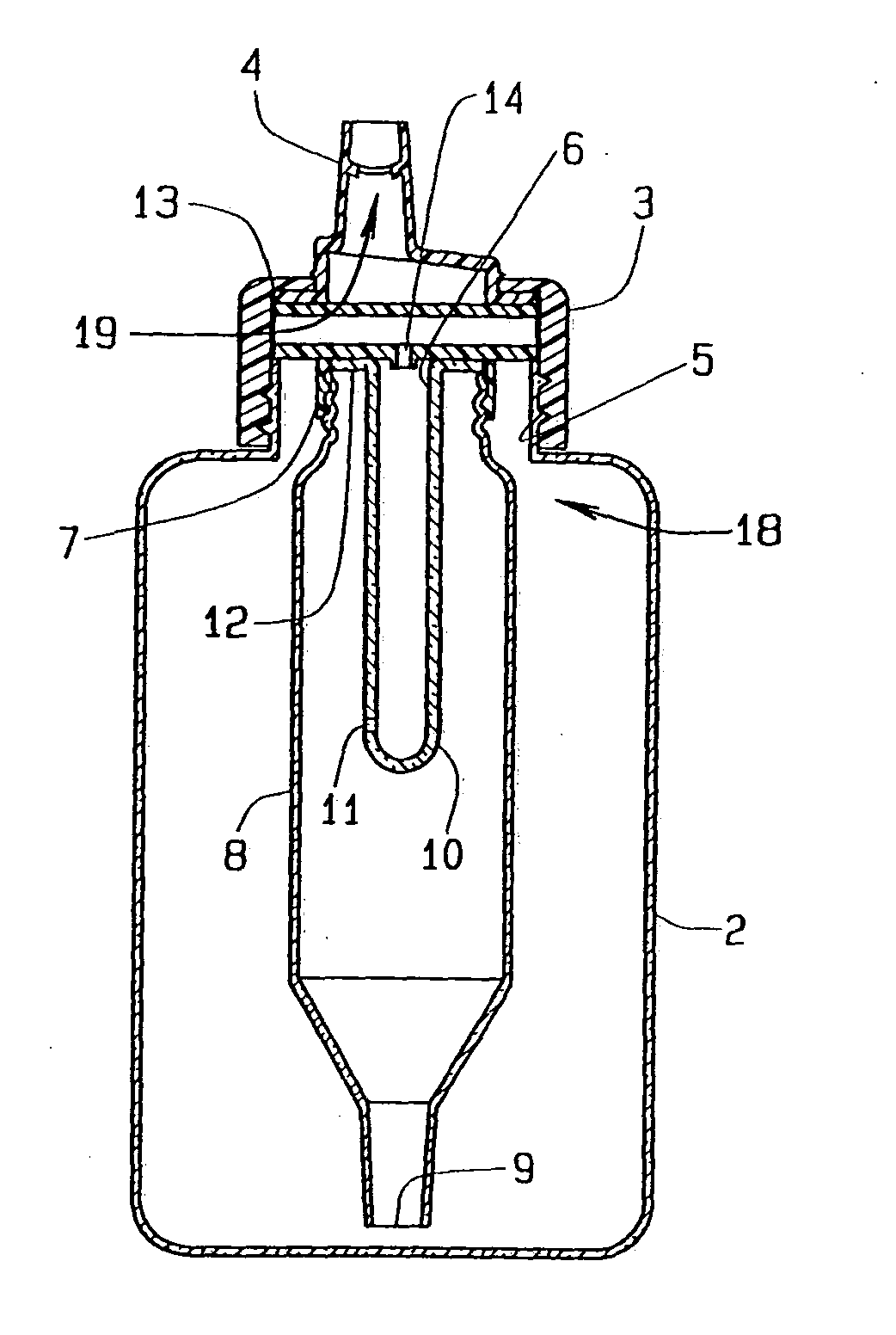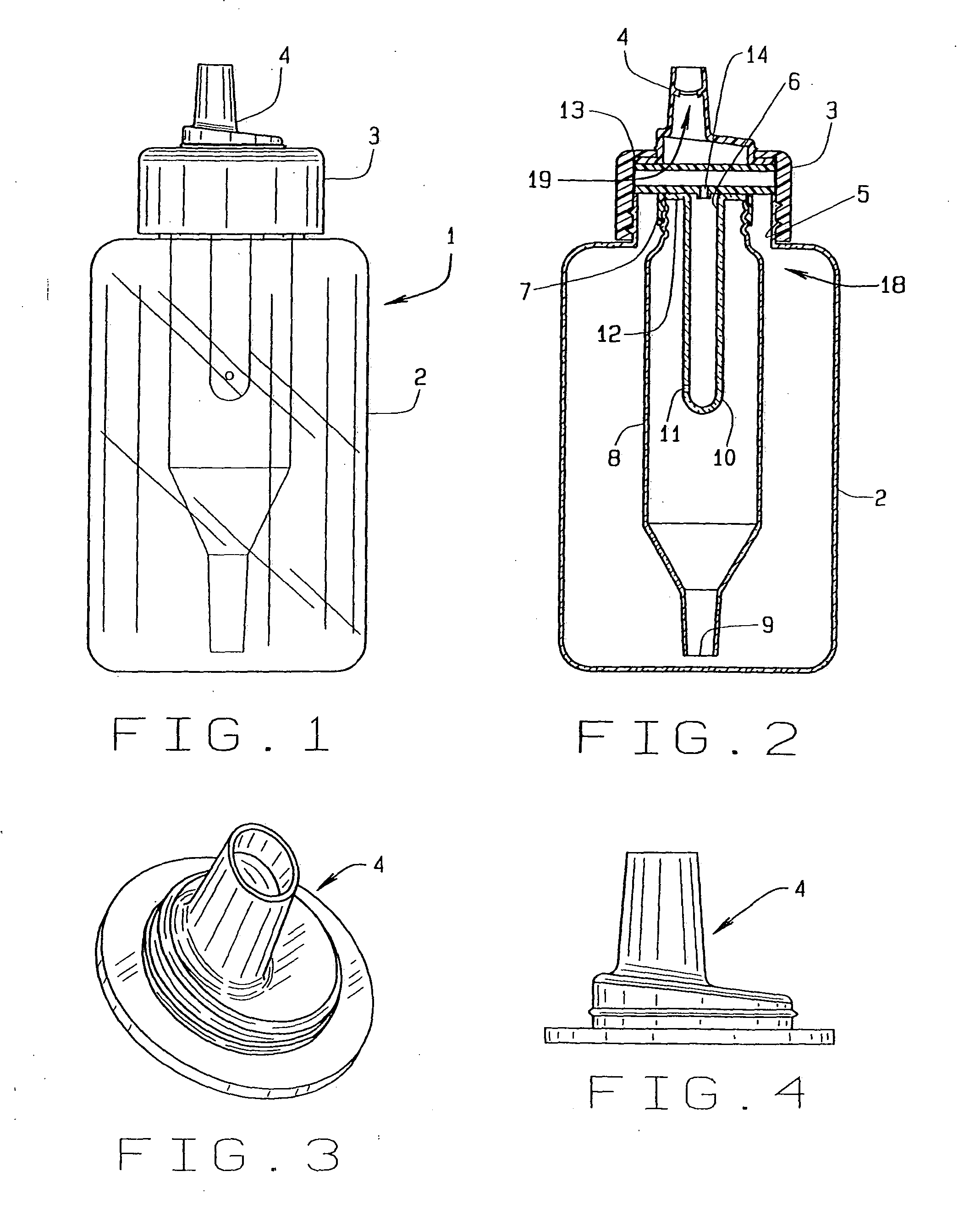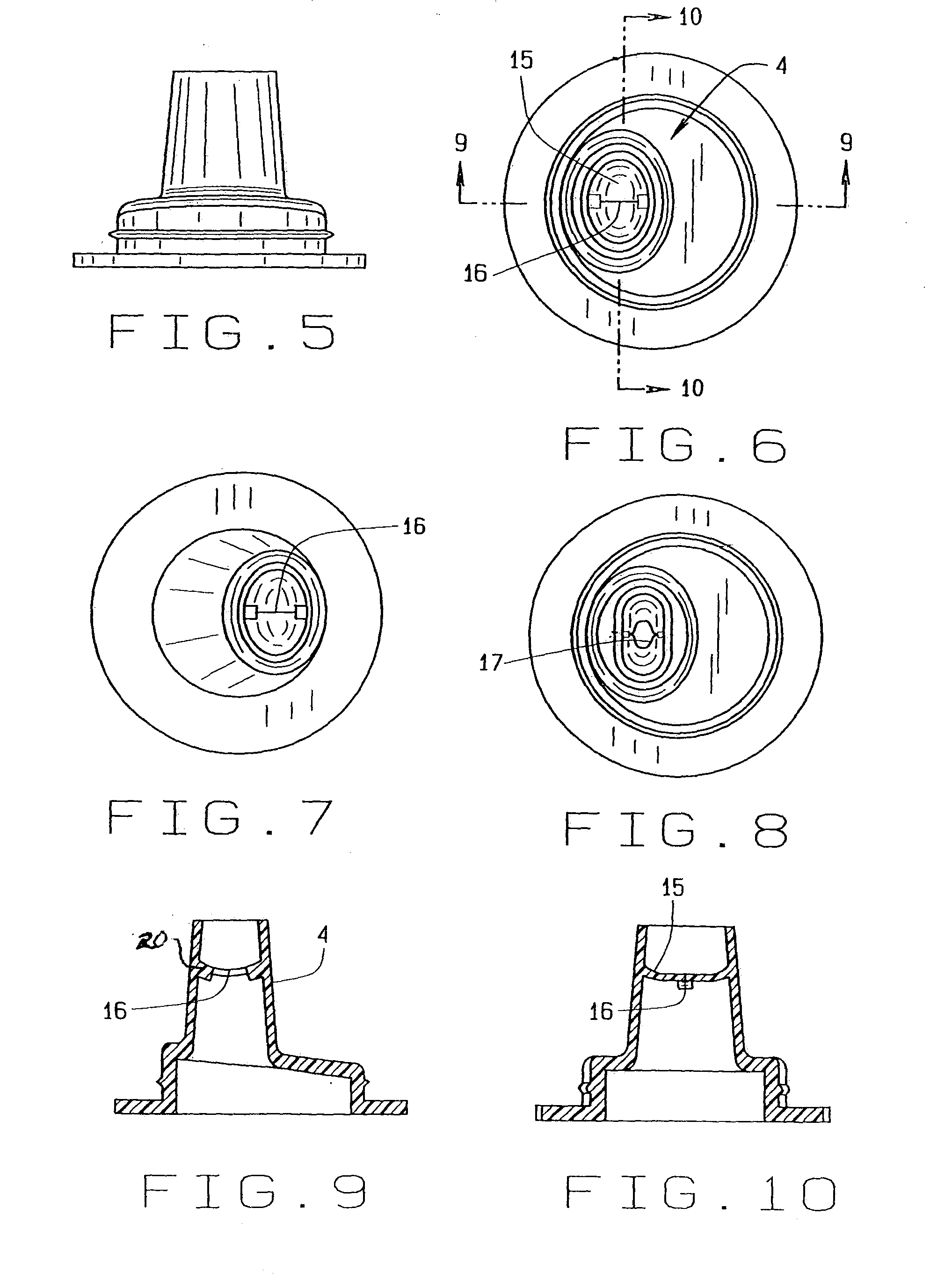Fully continuously vented drinking cup for infants and children
a drinking cup and fully continuously vented technology, applied in the direction of drinking cups, feeding containers, teasers, etc., can solve the problems of preventing the effective flow of liquid from the container, difficult for the child to feed, and highly undesirable, so as to eliminate the generation of vacuum, convenient and easy to use, and economic and simple to manufacture
- Summary
- Abstract
- Description
- Claims
- Application Information
AI Technical Summary
Benefits of technology
Problems solved by technology
Method used
Image
Examples
Embodiment Construction
[0085]In referring to the drawings, and in particular FIG. 1, the vented drinking cup 1 of this invention is readily disclosed. It includes a cup like container 2 which may be a smaller baby bottle, or a cup that is threaded at its upper opening, or any related type of container. Threadedly engaging upon the top of the cup is a collar 3, which holds the drinking spout 4 fixedly in position along the top of the structure, and through which the baby feeds, during drinking.
[0086]As can be seen in FIG. 2, which is a cross section of the embodiment of FIG. 1, the cup or bottle 2, has a threaded upper integral rim 5, to which the threaded collar 3 is applied. Provided for resting upon the upper edge of the rim 5 is the vent insert 6, and extending downwardly from the vent insert is a further segment or sleeve like member 7. These components can be integrally formed. Threadely engaging within the sleeve 7 is a reservoir tube 8, which has an opening provided, as at 9, at its downward most s...
PUM
 Login to View More
Login to View More Abstract
Description
Claims
Application Information
 Login to View More
Login to View More - R&D
- Intellectual Property
- Life Sciences
- Materials
- Tech Scout
- Unparalleled Data Quality
- Higher Quality Content
- 60% Fewer Hallucinations
Browse by: Latest US Patents, China's latest patents, Technical Efficacy Thesaurus, Application Domain, Technology Topic, Popular Technical Reports.
© 2025 PatSnap. All rights reserved.Legal|Privacy policy|Modern Slavery Act Transparency Statement|Sitemap|About US| Contact US: help@patsnap.com



